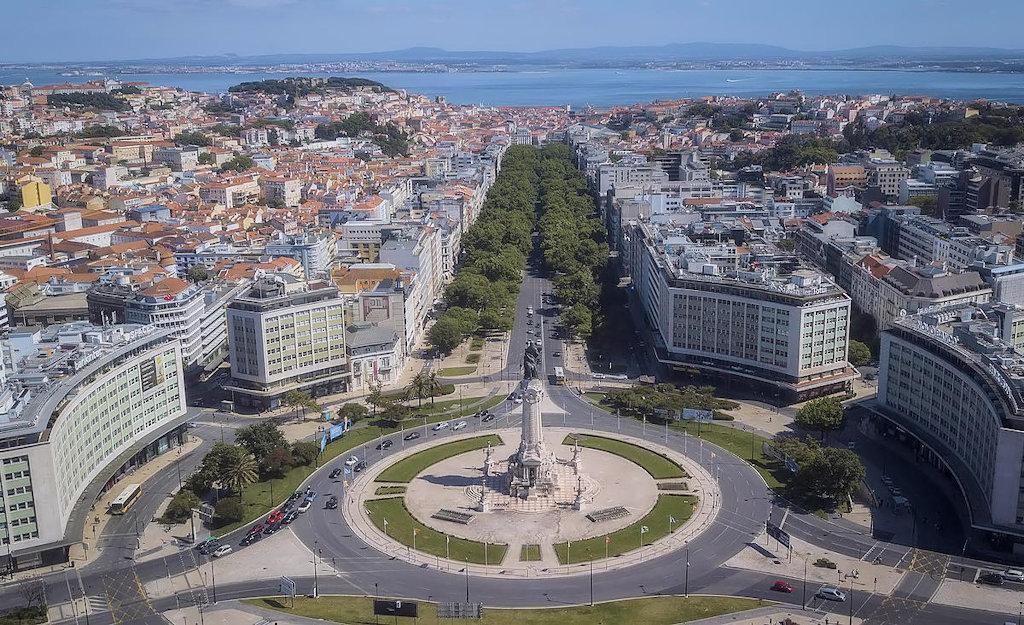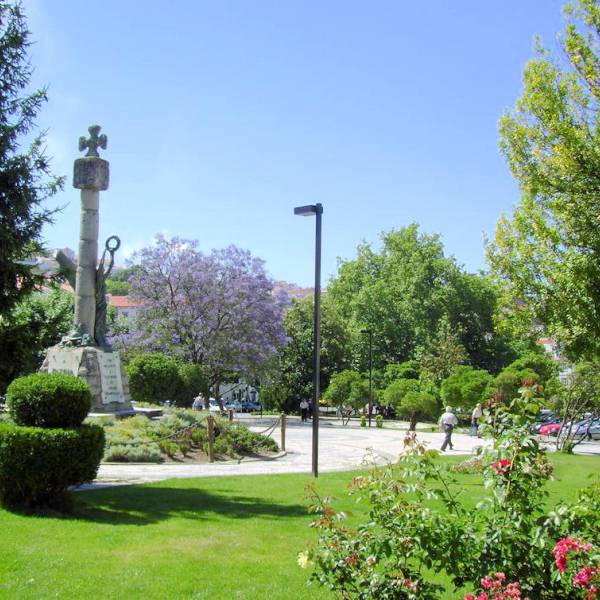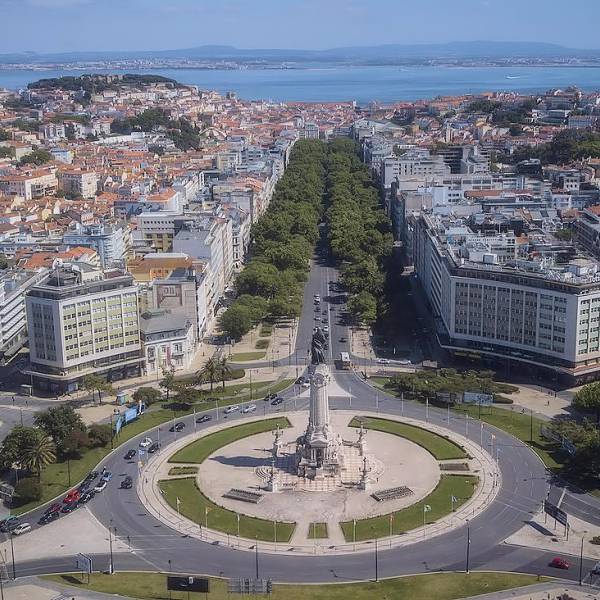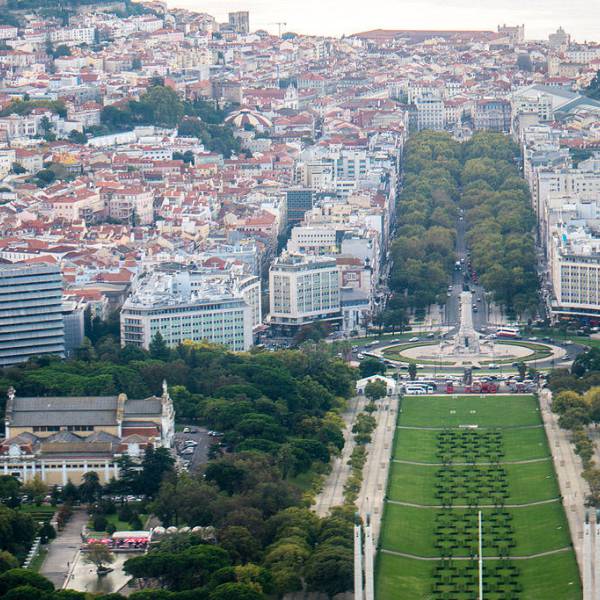The origins of Avenida da Liberdade and Praça dos Restauradores can be traced back to a boulevard called Passeio Público, which was initiated in 1764 and designed by architect Reinaldo Manuel. Originally enclosed by walls, the slope underwent significant transformations in the 1830s and 1840s under the guidance of architect Malaquias Ferreira Leal. Leal introduced a new arrangement of gardens and fountains, featuring cascading waterfalls and allegorical statues representing the Tagus and Douro rivers.
After much controversy, the construction of Avenida da Liberdade took place between 1879 and 1886, inspired by the boulevards of Paris. The creation of this avenue marked a milestone in the city's expansion towards the north and quickly became a reference point for the affluent classes who sought to establish their residences in the area.
Over the years, many of the original buildings along the avenue have been replaced by office buildings and hotels. However, Avenida da Liberdade still showcases fascinating architectural and artistic gems, particularly from the late 19th and early 20th centuries. The avenue is adorned with statues of renowned writers such as Almeida Garrett, Alexandre Herculano, António Feliciano de Castilho, and others. Notably, the Monument to the Fallen of the Great War (World War I), inaugurated in 1931, designed by Rebelo de Andrade and Maximiano Alves, stands near Parque Mayer.
The scenic qualities, prestigious shops, hotels, theaters, and historical buildings make Avenida da Liberdade a tourist hotspot. In fact, it ranks as the 35th most expensive avenue in the world. The avenue is also the main stage for traditional parades during the city's festivities, particularly on the eve of the feast of Saint Anthony of Lisbon (the night of June 12th to 13th), where different neighborhoods compete for the title of the "best march."
Avenida da Liberdade is adorned with several monuments and statues, including the statue of Simón Bolívar by Arturo R. Aguilero, offered by the Portuguese community in Venezuela to Portugal in 1978. Other notable statues include those of Oliveira Martins by Leopoldo de Almeida in 1952, Alexandre Herculano by Salvador Barata Feyo in 1950, Almeida Garrett by Salvador Barata Feyo in 1950, António Feliciano de Castilho by Leopoldo de Almeida in 1950, Rosa Araújo Monument by Costa Motta in 1936, and the Monument to the Fallen of the Great War by Maximiano Alves and architects Guilherme Rebelo de Andrade and Carlos Rebello de Andrade in 1931. Additionally, the palatial building where D. Maria Pia of Saxe-Coburg and Gotha and Braganza was born in 1907 adds to the avenue's historical significance.
Lisbon.vip Recommends
In addition to the traditional tailoring shops, the avenue is home to a plethora of national and international luxury fashion, jewelry, and watch brands. Names such as Louis Vuitton, Prada, Cartier, Gucci, Versace, Loewe, Carolina Herrera, Bvlgari, Miu Miu, Max Mara, Dolce & Gabbana, Armani, Tod's, and Burberry are present along the avenue. There are also several luxury multi-brand stores that showcase renowned labels such as Christian Dior, Chanel, Versace, Balmain, Gucci, Givenchy, Yves Saint Laurent, Michael Kors, Stella McCartney, Christian Louboutin, Donna Karan, and many more.
Avenida da Liberdade is served by three Lisbon Metro stations: "Restauradores" at the beginning of the avenue, served by the Blue Line; "Avenida" in the central part, also served by the Blue Line; and "Marquês de Pombal" near Praça do Marquês de Pombal, served by both the Blue and Yellow Lines.
In an effort to improve air quality, starting from January 15th, 2015, cars registered before 2000 were prohibited from circulating on Avenida da Liberdade between 7:00 a.m. and 9:00 p.m. on weekdays. Exceptions were made for emergency vehicles, historic cars, residents' vehicles, police and military vehicles, prisoner transport, armored money transport, natural gas and LPG cars, as well as motorcycles. This measure sparked controversy and was seen by some as an isolated and socially exclusive decision, as it implied that only the wealthy could drive in Lisbon, leaving those with limited means unable to comply with the regulations.
On May 11th, 2022, the Lisbon City Council approved the elimination of car traffic on Avenida da Liberdade on Sundays and holidays, further enhancing the avenue's appeal as a pedestrian-friendly space.
Avenida da Liberdade remains a symbol of Lisbon's beauty, sophistication, and cultural richness. Its allure continues to captivate visitors and locals alike, offering a blend of history, luxury, and vibrant energy that makes it an unforgettable destination. Strolling along this grand boulevard, one can't help but be enchanted by the enchanting atmosphere and timeless elegance that define Avenida da Liberdade—a true gem in the heart of Lisbon.
Map View






